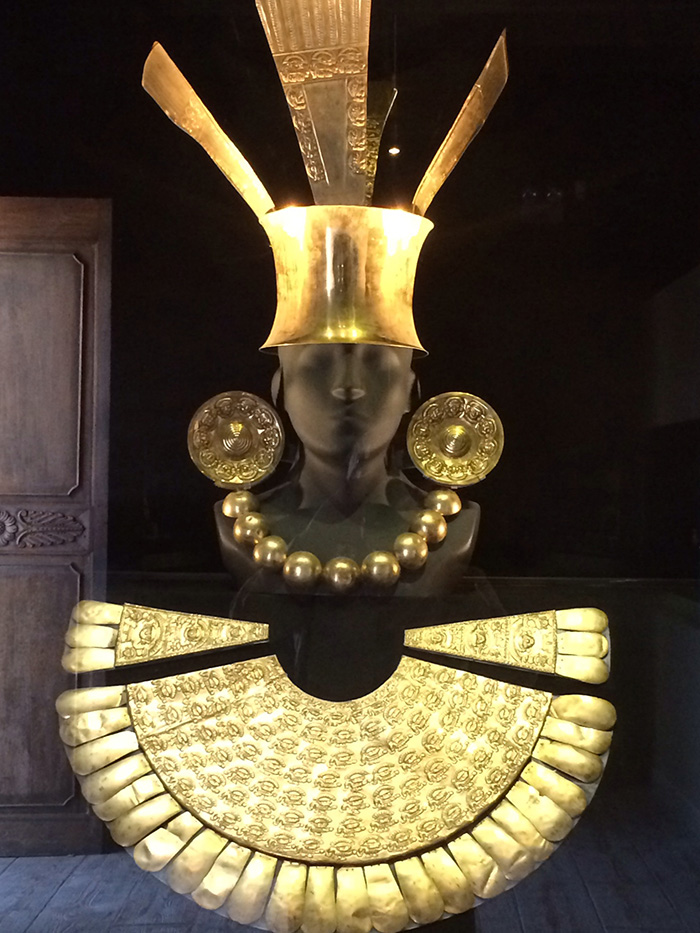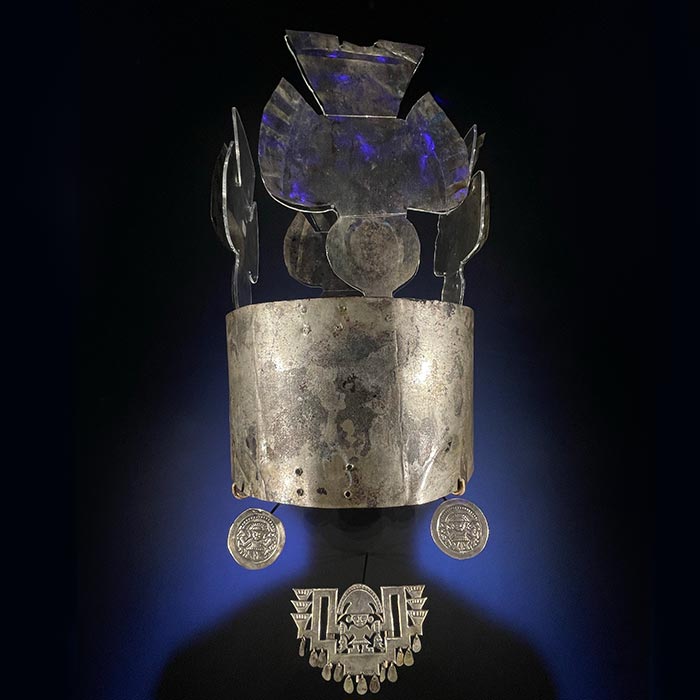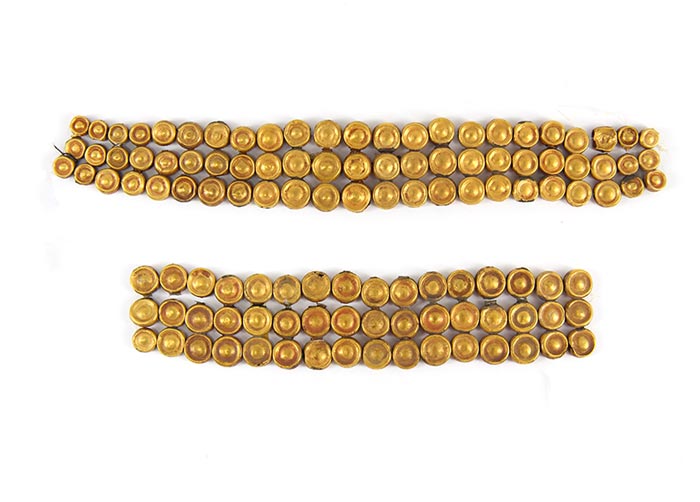My agenda
23 March 2022
Share
“Machu Picchu and the treasures of Peru”: a major exhibition at the Cité de l’Architecture
Not been lucky enough to visit Machu Picchu and the Larco Museum? Well now they’ve come all the way to you. 192 archaeological objects, including 90 spectacular jewels. Here we zoom in on the latter.
By Sandrine Merle.
This is a major happening, comparable to the fabled exhibitions of the treasures of Tutankhamen. Using virtual reality, it transports us back in time through 3,000 years of history, plunging us into the ancient Peru of the pre-Inca cultures: Chavin, Mochica, Chimu, Nasca, etc. The whole exhibition revolves around the symbol of Machu Picchu, the fabulous site built circa 1450 by their heirs, the Incas. Seated in an armchair equipped with multi-sensorial stimulation functions, headphones and diffusers of perfumes, we fly over the ruins, getting as close as possible. The splendor, grandeur, excess, technical prowess and verdant environment are dazzling. This is an unprecedented opportunity, considering that access to the site is now limited to 250,000 people per year. I myself was fortunate enough to go to Machu Picchu and yet I never experienced it in quite this way!
An exhibition full of special effects, where archaeology meets technology
This “teleportation” to Machu Picchu, made possible thanks to an ultramodern combination of technology, imagery, haptic and animated devices, sets the tone of the scenography. To better help you to understand these complex civilizations of the ancient Peru, you’re submerged into a world of sounds – the rustling of the luxuriant jungle under the diluvian rains, the cries of the jaguar – and of smells, complete with visual projections showing the rituals, deities and mythological heroes. You discover the supernatural adventures of the god Ai Apaec, who sets out on a mission from this land in search of the Sun, as it disappears into the ocean depths. He takes on dangerous adversaries in a bid to acquire their powers, transforming himself by turns into a sea urchin, a fish, and a crab (the nose ornament is superb) to rescue the sun from the darkness and enable it to ensure the survival of his community once again. The 192 real objects, ranging from surprisingly realistic ceramics (a whole room is dedicated to erotica) and beautiful textiles like the feathered flag to dishes and jewelry, are mixed with 3D objects. You can also take part in an escape game using the real elements of the Cité de l’architecture and the exhibition objects to win a gold jewel by Motché (the French brand of Carole Fraresso – co-curator of the exhibition and expert in pre-Columbian art) that showcases the exquisite expertise of Peruvian jewelry. It’s a playful immersive experience that heightens the emotions and sheds light on the entire culture.
The highpoint of the exhibition, the funerary jewels
In my favorite room, the “room of the ancestors”, the impressive jewels I first saw at the Larco Museum, a few years ago. They are placed on mysterious shadows resuscitating the dignitaries of ancient Peru. The breastplates, the incredibly modern nose ornaments, the disproportionately high head ornaments seem to hover as if by magic… “These ornaments were not worn on a daily basis – they were insignia of power, sparkling and sonorous ornaments that dignitaries used to dazzle and impress during ceremonies. Thus priests, priestesses and political leaders appeared at the top of the temple, as dazzling as the gods they represented. These jewels also adorned the dead to facilitate their journey to the world of the ancestors. That’s why they were all discovered in royal tombs,” explains Carole Fraresso. Everything works in networks of symbols… Gold, a diurnal star, symbolizes the Sun, which evokes male deities. The silver, nocturnal star, represents the Moon, which symbolizes the feminine divinities of the sea and is associated with the fertility of the mother earth Pachamama. Copper, an oxidizable metal, suggests transformation and reminds us of mortals, while its red color is linked to the blood of the sacrificed.
Jewelry virtuosity
By their sheer beauty, these jewels compete with the pieces found in the Scythian or Egyptian tombs. But also by their technical brilliance: in Peru, craftsmen did not resort to the casting of gold to obtain molded objects, they reworked the metal using hammers, enabling them to create imposing and light objects at the same time, while saving the precious material. They excelled in gilding and perfectly mastered alloys to obtain golden, pinkish tints. Of the 10 pre-Columbian dynasties, only one complete trousseau remains, from the Chimor kingdom (1100–1470 AD). Take the virtuoso breastplate for example: made of ultra-thin gold leaf – on a micron level – it never exceeds one millimeter. The regularity of the workmanship of the thin sheet, devoid of any micro-cracks, is equally extraordinary. “It was made without a rolling mill, with stone hammers of different shapes and weights, using only the technical mastery of the craftsman’s gestures. This would be impossible to achieve today,” says Carole Fraresso.
This exhibition, an unforgettable journey, can be extended by another real-life trip, consisting of about ten days in Peru. In partnership with TFJP, Carole Fraresso has devised an exclusive immersive Machu Picchu experience, visiting the site itself of course, but also the country’s exceptional museums in the company of specialists, plus the workshops of some of the craftsmen keeping the tradition alive. One for the diary of all jewelry lovers: the journey begins in October! Click here.
“Machu Picchu and the treasures of Peru”: a major exhibition at the Cité de l’Architecture from 16 April 2022 to 4 September 2022
Banner image: Mochica headdress – 100-800 A.-C. © Larco Museum, Lima-Peru



























